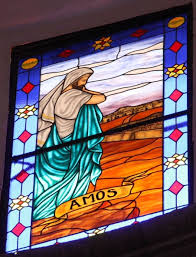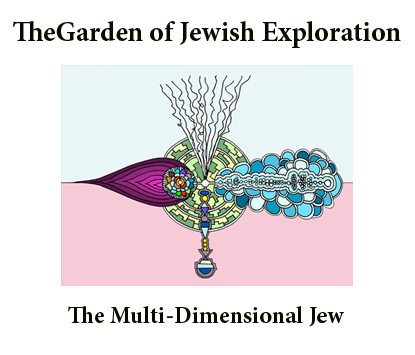
In the previous essay, we introduced this puzzling text from the Yerushalmi that offered some unexpected sources for the seven-day mourning period. We discussed the use of the inauguration of the Mishkan in the rabbis’ explanation, and now we will look at their use of Miriam’s tzara’at and the prophecy of Amos.
Miriam’s tzara’at – צרעת (Bamidbar 12)
The connection between death of a metzora (a person with a spiritual skin disease) is a bit more direct. Here the Yerushalmi combines two different verses to make its claim. In order to understand their juxtaposition, we need to see the few verses at the conclusion of this narrative. Miriam has already been struck with tzara’at, and her brothers are davening on her behalf. Here the Torah says:
במדבר י”ב:י”א-ט”ז
(יא) וַיֹּאמֶר אַהֲרֹן אֶל מֹשֶׁה בִּי אֲדֹנִי אַל נָא תָשֵׁת עָלֵינוּ חַטָּאת אֲשֶׁר נוֹאַלְנוּ וַאֲשֶׁר חָטָאנוּ: (יב) אַל נָא תְהִי כַּמֵּת אֲשֶׁר בְּצֵאתוֹ מֵרֶחֶם אִמּוֹ וַיֵּאָכֵל חֲצִי בְשָׂרוֹ: (יג) וַיִּצְעַק מֹשֶׁה אֶל יְקֹוָק לֵאמֹר אֵל נָא רְפָא נָא לָהּ: (יד) וַיֹּאמֶר יְקֹוָק אֶל מֹשֶׁה וְאָבִיהָ יָרֹק יָרַק בְּפָנֶיהָ הֲלֹא תִכָּלֵם שִׁבְעַת יָמִים תִּסָּגֵר שִׁבְעַת יָמִים מִחוּץ לַמַּחֲנֶה וְאַחַר תֵּאָסֵף: (טו) וַתִּסָּגֵר מִרְיָם מִחוּץ לַמַּחֲנֶה שִׁבְעַת יָמִים וְהָעָם לֹא נָסַע עַד הֵאָסֵף מִרְיָם:
Bamidbar 12: 11-16
(11) And Aaron said to Moses, Oh, my lord, I plead with you, lay not the sin upon us in which we have done foolishly and in which we have sinned. (12) Let her not be as one dead, already half decomposed when he comes out of his mother’s womb. (13) And Moses cried to the Lord, saying, Heal her now, O God, I beseech You! (14) And the Lord said to Moses, If her father had but spit in her face, should she not be ashamed for seven days? Let her be quarantined outside the camp for seven days, and after that let her be brought in again. (15) So Miriam was quarantined outside the camp for seven days, and the people did not journey on until Miriam was brought in again.
The Yerushalmi here brings together the phrases “Let her not be as one dead (vs.12)” with “Let her be quarantined outside the camp for seven days” (vs. 14).” The experience of shiva for the mourner can sometimes make one feel cordoned off from the community. The mourner does not leave his or her home for a week. The community brings food, and the mourner is separated from communal life.
The separation is meant to give the mourner the emotional space to begin the process of healing. That journey can take days, weeks, months or years – depending on what the relationship looked like in life. Those first seven days are the most restrictive and meant to allow the healing to begin. The same might be said for the metzora, who must be separated from the community for (at least) a week while his or her body heals.
However, the physical healing of the metzora is meant to reflect a spiritual process as well. Just as the metzora must be outside of the camp, so too the mourner spends time “outside” the camp of the People. As the mourner gets up from shiva and takes a walk in the public sphere – leaving home for the first time in a week – we pray that the physical act of rising from the chair and walking out of the home can begin the journey toward emotional healing.
Holidays and Mourning (Amos 8:10)

The main rebuke of Amos against the Jewish People was that the rich and powerful were abusing the poor, the weak and the vulnerable. The vast majority of the book repeats this theme over and over again. That theme returns in chapter eight verse four as Amos turns to the leaders and says:
עמוס פרק ח:ד-ה
(ד) שִׁמְעוּ זֹאת הַשֹּׁאֲפִים אֶבְיוֹן וְלַשְׁבִּית ענוי עֲנִיֵּי אָרֶץ: (ה) לֵאמֹר מָתַי יַעֲבֹר הַחֹדֶשׁ וְנַשְׁבִּירָה שֶּׁבֶר וְהַשַּׁבָּת וְנִפְתְּחָה בָּר לְהַקְטִין אֵיפָה וּלְהַגְדִּיל שֶׁקֶל וּלְעַוֵּת מֹאזְנֵי מִרְמָה:
Amos 8:4-5
(4) Hear this, O you who would swallow up and trample down the needy, even to make the poor of the land to fail and come to an end, (5) Saying, When will the New Moon festival be past that we may sell grain? And the Sabbath that we may offer wheat for sale, making the ephah [measure] small and the shekel [measure] great and falsifying the scales by deceit,
The Navi goes on to say that, as a result of this abuse, there will come a day of great suffering:
עמוס פרק ח:ט וְהָיָה בַּיּוֹם הַהוּא נְאֻם אֲדֹנָי יְקֹוִק וְהֵבֵאתִי הַשֶּׁמֶשׁ בַּצָּהֳרָיִם וְהַחֲשַׁכְתִּי לָאָרֶץ בְּיוֹם אוֹר:
Amos 8:9 And in that day, says the Lord God, I will cause the sun to go down at noon, and I will darken the earth in the broad daylight.
The Yerushalmi, in discussing the seven-day mourning period, quotes the first half of the next verse:
עמוס פרק ח:י וְהָפַכְתִּי חַגֵּיכֶם לְאֵבֶל וְכָל שִׁירֵיכֶם לְקִינָה וְהַעֲלֵיתִי עַל כָּל מָתְנַיִם שָׂק וְעַל כָּל רֹאשׁ קָרְחָה וְשַׂמְתִּיהָ כְּאֵבֶל יָחִיד וְאַחֲרִיתָהּ כְּיוֹם מָר:
Amos 8:10 And I will turn your feasts into mourning and all your songs into lamentation, and I will cause sackcloth to be put upon all loins and baldness [for mourning] shall come on every head; and I will make that time as the mourning for an only son, and the end of it as a bitter day.
The Navi is here turning to the Jewish leadership and telling them that their terrible behavior will ultimately lead to their own destruction. The greatest irony will be that, when that day comes, what was once a time for great celebration will become a period of mourning and elegy. Why might the Rabbis in the Yerushalmi have sought ought this prophetic context as a source for seven days of mourning?
As we know, part of what happens after loss is that even times that were once full of joy become emotionally complex. The experience of the first yontif or the first big family gathering without a loved one can be jarring. That person’s empty seat can bring bring a flood of emotions in unexpected ways.
These two models brings the Yerushalmi to a close and serve as an important framing for learning this area of Halakha. The inauguration of the Mishkan reminds us of the holiness of this learning. Miriam’s tzara’at teaches the mourner of the value of being set apart from the community for a period of time. Finally, Amos reminds us of the complexity of life after loss – that what was once a holiday can become a time of sadness.



 In the first two essays we saw three different surprising sources offered by the Yerushalmi for the source of the seven days of
In the first two essays we saw three different surprising sources offered by the Yerushalmi for the source of the seven days of 

